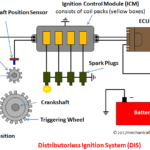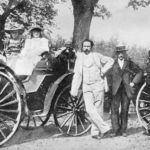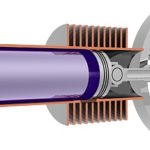Introduction
“From a little spark may burst a flame” by Dante Alighieri, Rightly said that a spark is required to start a flame and in an automobile, since there is a conversion of chemical energy (i.e. air-fuel mixture) into mechanical energy i.e. (crankshaft rotation) spark is essential which is responsible for the combustion, but from where does this spark come? How does the timing of the spark and prepared air-fuel mixture is managed? Let’s just dig it out.
In an internal combustion engine, combustion is a continuous cycle and occurs thousands of times in a minute so an effective and accurate source of ignition is required. The idea of spark ignition came from a toy electric pistol that used an electric spark to ignite a mixture of hydrogen and air to shoot a cork.
The electronic ignition system is the type of ignition system that uses electronic circuits, usually by transistors controlled by sensors to generate electric pulses which in turn generate a better spark that can even burn the lean mixture and provide better economy and lower emission.
Why Electronic Ignition System?
Various types of ignition systems were used lately that are
1. Glow plug ignition system,
2. Magneto ignition system
3. Electric coil or Battery ignition system,
But all these systems have their own limitations that are:
1. Glow Plug Ignition System
It is the oldest of all and is obsolete because of its many limitations- The glow plug ignition system has a problem of causing uncontrolled combustion due to the use of an electrode as an ignition source, which is solved later after the introduction of Magneto ignition system in which electrodes are replaced by the spark plug. Unlike magneto ignition, the Glow plug produces high exhaust emissions due to incomplete combustion.
2. Magneto Ignition System:
It is the system introduced to overcome the limitations of old ignition systems, but it has its own limitations-
- It depends on the engine speed, so shows starting problem due to low speed at the start of the engine, which is later solved with the introduction of a Battery coil ignition system in which the battery becomes the energy source for the system.
- Expensive than an electric coil ignition system.
- Wear and tear is more than battery coil ignition because of the greater number of mechanical moving parts than battery coil system.
- Can cause misfires due to leakage.
Also Read:
- What is CVT – Continuously Variable Transmission and How it Works?
- How Anti-lock Braking System (ABS) Works?
- Different Types of Engine
Electric Coil Ignition or Battery Ignition System
This System is the latest of all the above and has been used for a long time due to its better efficiency and accuracy but it also shows some limitations-
- Less efficient with the high-speed engines
- High maintenance is required due to mechanical and electrical wear of the contact breaker points
So, Since in the modern automobile new technologies are introduced and it is found that the use of sensors and electronic components gives more effective and accurate outputs than that of mechanical components so the use of sensors with electronically controlled units becomes essential to fulfill the needs of modern high power and high-speed automobiles or hyper series of automobiles, so to fulfill the need for high performance, high mileage, and greater reliability has led to the development of Electronic ignition system.
Main Parts of Electronic Ignition System

1. Battery
It is the powerhouse of the ignition system. It supplies the necessary energy to the ignition system as same as the battery coil ignition system.
2. Ignition Switch
It is the switch used in the ignition system which governs the ON and OFF of the system. You can turn it in the ON position if you want to start your car.
3. Ignition Control Module or Control Unit of Ignition System
It is the brain or programmed instruction given to the ignition system which monitors and controls the timing and intensity of the spark automatically. It is the device that receives voltage signals from the armature and set the primary coil to ON and OFF, it can be placed separately outside the distributor or can be placed in the electronic control unit box of the vehicle.
Also Read:
- Torque Converter Working, Principle, Main Parts, and Application
- How DTSi Engine Works – Explained?
- Top 5 Best Vacuum Cleaner for Car to Buy
4. Armature
Contact breaker points of the battery ignition system are replaced by an armature which consists of a reluctor with teeth (the rotating part), vacuum advance, and a pickup coil (to catch the voltage signals), The Electronic module receives the voltage signals from the armature to make and break the circuit, which in turn sets the timing of the distributor to accurately distribute current to the spark plugs.
5. Ignition Coil
Similar to the battery ignition coil system, the ignition coil is used in the electronic ignition system to produce high voltage to the spark plug.
6. Ignition Distributor
As the name indicates it is the device used to distribute the current to the spark plugs of the multi-cylinder engine.
7. Spark Plug
The spark plug is used to generate a spark inside the cylinder.
Working of Electronic Ignition System

- To understand the working of the electronic ignition system let’s consider the above figure in which all the components mentioned above are connected in their working order.
- When the driver switches ON the ignition switch to start a vehicle the current starts flowing from the battery through the ignition switch to the coil primary winding, which in turn starts the armature pickup coil to receive and send the voltage signals from the armature to the ignition module.
- When the tooth of the rotating reluctor comes in front of the pickup coil as shown in Fig the voltage signal from pickup coil is sent to the electronic module which in turn senses the signal and stops the current to flow from the primary coil.
- When the tooth of the rotating reluctor goes away from the pickup coil, the change in voltage signal is sent by pickup coil to the ignition module and a timing circuit inside the ignition module turns ON the current flow.
- A magnetic field is generated in the ignition coil due to this continuous make and break of the circuit which induced an EMF in the secondary winding which increases the voltage up to 50,000 Volts.
- This high voltage is then sent to the distributor, which has the rotating rotor and distributor points which are set according to the ignition timing.
- When the rotor comes in front of any of those distributor points the jumping of voltage through the air gap from the rotor to the distributor point takes place which is then sent to the adjacent spark plug terminal through the high-tension cable. A voltage difference is generated between the central electrode and ground electrode which is responsible for generating a spark at the tip of the spark plug and finally, the combustion takes place.
For a better understanding of How the Electronic Ignition System Works watch the video:
Application of Electronic Ignition
- The electronic ignition system is used in modern hypercars like the Audi A4, Mahindra XUV-500, etc., and bikes like ktm duke 390cc, Ducati Super sports, etc. to meet the high reliability and performance need.
- It is also used in aircraft engine due to its better reliability and less maintenance.
Conclusion
Here we have discussed what is Electronic Ignition System, its main parts, working, and application with a video tutorial. I hope you have understood it clearly without any difficulty and if you found this piece of information useful and valuable then don’t forget to like and share it.









very well explained. It is very knowledgeable and useful.Thanks.